Nearly 45 minutes had now passed and I still had absolutely no idea why David was unconscious. He was stable, but although he wasn’t getting any worse, he definitely wasn’t waking up. His wife had managed to find someone to look after their daughter, so was at his side, looking understandably upset and worried. I felt under huge pressure to work out what was going on. What was I missing? Barry the charge nurse wandered back from his break and took a glance at David. ‘Sure he’s not overdosed on something?’ he asked.
‘He doesn’t look like a drug user,’ I responded.
Barry gave me a sideways look. ‘Come on, Ben, you’ve been doing this job long enough to know that doesn’t mean a thing. He’s a youngish bloke, unconscious with slow breathing. We both know the most common cause of that.’
Because David didn’t fit my stereotype of a drug addict, I hadn’t even considered drug overdose as a possibility. Whereas, even before my other patient Kenny introduced himself as Crackhead Kenny, it wouldn’t have taken a genius to suspect that he might be a user: his clothes, his hair, his tattoos and even his smell… everything fitted the stereotype of the archetypal drug addict. David had a young daughter and a wife who was a nurse working at this very hospital. He lived in one of the nicer parts of town, and this was a Tuesday afternoon, not a Saturday night. He couldn’t have been taking drugs, could he?
Barry was never one to turn down the opportunity to get one over on me. He grabbed a pen torch and shone it into David’s eyes. Both pupils were tiny. Next he grabbed David’s left arm and pointed out to me the needle prick mark on his forearm. We had taken blood and put in a cannula in his right arm, so the needle prick must have already been there when David arrived at hospital. Without saying a word, Barry went to the cupboard, pulled out some naloxone and injected it into David’s cannula. Naloxone is an antidote to morphine and heroin. It reverses the effects almost instantly. Within a minute David was awake, pulling off his oxygen mask and asking where he was.
Barry was trying to catch my eye so that I would notice his smug smirk, but I was too preoccupied with David and his wife. Her relief at his recovery was very quickly replaced with tears of hurt and anger. As a nurse she knew the significance of his sudden improvement following the naloxone. Through her tears she kept asking him why. David only seemed to be able to answer, ‘I don’t know.’ It turned out that he had spent a period of time injecting heroin regularly in his early 20s but had kept away from it for years. For some reason, today his previous addiction had got the better of him and he’d tried to inject himself with the quantity of heroin that he used to take as a regular user. After such a long break, his body was naive to the drug and he accidentally overdosed.
Russell Brand talks very eloquently about the power drugs have over an addict even after years of staying clean. For some people the pull of that ‘high’ is something that hangs over them for ever, however settled and happy their drug-free life might seem on the outside. I learned that day that I had to leave my stupid stereotypes behind. Clearly, anyone can suffer from drug addiction.
The hardest part of the day was telling them that I was going to have to contact social services. I’m sure David was a great dad, but he had taken drugs when he was responsible for looking after his young daughter. Despite David’s pleas, I just couldn’t ignore that. I spent a lot of time with David and his wife, and we talked about getting help and support for them both. David had beaten drugs before, and there was no reason why he couldn’t again. He had so much to stay clean for.
There have been a fair few doctors and nurses over the years who haven’t exactly covered our profession in glory. It’s understandable that medics who have either deliberately or accidentally killed their patients make headline news. However, just occasionally, there are hospital deaths that aren’t solely the fault of the medical staff.
One medical team in a hospital in South Africa started noticing that each Saturday morning a patient who occupied a certain bed on the intensive care ward would be found dead with no apparent cause. Initially it was considered a morose coincidence, but soon staff realised that there must be some reason for the patients in this specific bed to all die within a week of arrival on the ward. The doctors feared the bed was contaminated with some sort of killer bug that was infecting the patients. Appropriate investigations were undertaken, but no bug was found. Presumably because of a lack of beds, or an unwillingness to give in to superstition, the killer bed was always refilled with a new patient each week, but the mysterious deaths continued.
Until, one day, somebody took notice of the cleaning lady as she did her weekly Friday-evening deep clean. The cleaner entered the ward, unplugged the life-support system beside the bed, and plugged in her floor polisher, before spending half an hour cleaning the ward. The staff finally realised what had been happening. Over the noise of her polishing machine, no one would have heard the gasps for breath and the death rattle from the desperate inhabitant of the ‘killer bed’. The cleaner would then plug back in the life-support, leaving a lovely clean floor and a dead patient. Labelled in the press as the ‘South African Floor Polisher Massacre’, the exact numbers of people who died still isn’t known!
( Disclaimer: I have absolutely no evidence that this actually happened, but I read it on the internet so it must be true?!)
As soon as I had rung the doorbell my heart sank. High-pitched yapping of a small dog was followed by the scraping of paws against the front door – always a foreboding start to a home visit.
‘Sinbad, shuddup! Stop that noise!’ I heard, as my patient Mrs Briggs shuffled slowly up to the door and grappled clumsily with the handle.
When the front door finally opened, Sinbad didn’t allow his advancing years or excessive weight to prevent him from jumping up at my legs and excitedly sniffing around my groin. Sinbad was a fat Jack Russell with a tuft of white hair on his chin that uncannily matched the sprouting white hairs on the chin of his owner.
Mrs Briggs was a kindly lady in her 70s. She was large all over, but most notable was the size of her legs. Years of fluid retention meant that her legs had steadily expanded to the size of small tree trunks. The circumference of her thighs looked barely different from that of her ankles, with only a few creases of her tightly stretched skin to suggest where her feet joined her lower legs. Her bloated feet were completely solid, and poking out were 10 spherical toes with brittle yellow toenails nestled on top. The soles of her feet were made up of a white crust of rock-hard skin with a flaky surface and some cracked scaly patches around the heel. The only footwear that she could now fit into were some old frayed slippers that had had the back cut away.
‘Do you want me to lock Sinbad in the backroom, Doctor? I know not everyone’s a dog lover.’
Every part of my being wanted to say ‘Yes, please’, but for some reason I politely agreed to allow Sinbad to accompany us. After Mrs Briggs had sat down on the sofa, Sinbad curled up contentedly at her feet and for just a short moment I felt something close to affection towards them both.
‘Thank you so much for coming out and visiting me, Dr Daniels. I’ve got some biscuits out specially.’ With that Mrs Briggs reached over and passed me a cracked china saucer holding a number of shortcake fingers. ‘Do take one,’ she said.
Читать дальше
Конец ознакомительного отрывка
Купить книгу
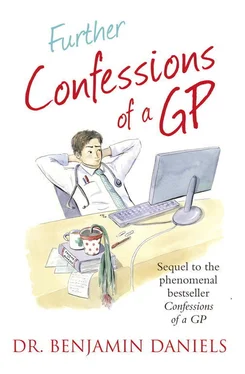

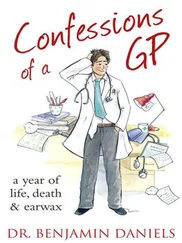


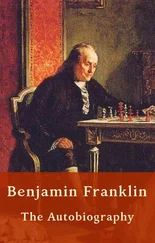



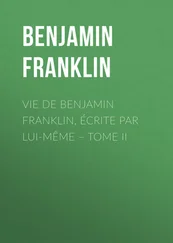
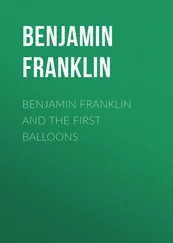
![Benjamin Franklin - Memoirs of Benjamin Franklin; Written by Himself. [Vol. 2 of 2]](/books/747975/benjamin-franklin-memoirs-of-benjamin-franklin-wr-thumb.webp)
![Benjamin Franklin - Memoirs of Benjamin Franklin; Written by Himself. [Vol. 1 of 2]](/books/748053/benjamin-franklin-memoirs-of-benjamin-franklin-wr-thumb.webp)